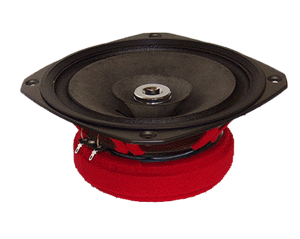I'm curious if anyone here has done a study of how the differening types of phase plugs work with single full range drivers?
Of particular interest is Decware's phase plug as it's completely different than any other type I've seen. For a white paper on how it works click on this link: http://www.decware.com/newsite/mainmenu.htm?/newsite/caraudio.htm&intro After you click on that link when the next page opens scroll down until you see DFR-8 and click on it. When the next page opens scroll down again until you see the phase plug and click on Read about the phase guide design here! below it. Finally the page that opens is their white paper on how their phase plug works differently from all other phase plugs.
I'm very interested in hearing from anyone who's tried different phase plugs and what their results were. I'd also appreciate input from anyone who's more technically orientated than I am on what they think about Decware's explanantion of how their phase plug works. TIA.
Thetubeguy1954
Of particular interest is Decware's phase plug as it's completely different than any other type I've seen. For a white paper on how it works click on this link: http://www.decware.com/newsite/mainmenu.htm?/newsite/caraudio.htm&intro After you click on that link when the next page opens scroll down until you see DFR-8 and click on it. When the next page opens scroll down again until you see the phase plug and click on Read about the phase guide design here! below it. Finally the page that opens is their white paper on how their phase plug works differently from all other phase plugs.
I'm very interested in hearing from anyone who's tried different phase plugs and what their results were. I'd also appreciate input from anyone who's more technically orientated than I am on what they think about Decware's explanantion of how their phase plug works. TIA.
Thetubeguy1954
I'd like to see tests as well.
You can't help but wonder if the socket didn't work better.
I do recall reading some test somewhere on someones plug and measurable improvement was shown. Maybe anything beats a dust cap.
On occasion I visit European forums . Those guys make phase plugs out of everything.
Bluto
You can't help but wonder if the socket didn't work better.
I do recall reading some test somewhere on someones plug and measurable improvement was shown. Maybe anything beats a dust cap.
On occasion I visit European forums . Those guys make phase plugs out of everything.
Bluto
Here's Bob Brines' take on the FE167E's with Planet-10 phase plugs:
http://www.geocities.com/rbrines1/Pages/Articles/Phase_Plugs/Phase_Plugs.html
And here's the Planet-10 page:
http://www.planet10-hifi.com/pp-info.html
I heard the speakers in question (Bob's FT-1600 MkII) and was immediate struck by how clear they sounded, which I attribute to the phase plugs (because I've heard plenty of Fostex 6-inchers and own the FE164 and FE166ES-R's). So in my newb opinion, they are an upgrade worth having.
edit: clarified that the speakers I heard were the model being tested.
http://www.geocities.com/rbrines1/Pages/Articles/Phase_Plugs/Phase_Plugs.html
And here's the Planet-10 page:
http://www.planet10-hifi.com/pp-info.html
I heard the speakers in question (Bob's FT-1600 MkII) and was immediate struck by how clear they sounded, which I attribute to the phase plugs (because I've heard plenty of Fostex 6-inchers and own the FE164 and FE166ES-R's). So in my newb opinion, they are an upgrade worth having.
edit: clarified that the speakers I heard were the model being tested.
MisterTwister said:I think it's best to use copper tube as phase plug.
it serves as shorting ring as well. though if driver's motor is underhung I see no advantage in using copper tube.
A copper sleeve through the gap on an underhung motor would help heat dissipation quite a bit, but as far as our concerns with the 'normal' purpose of shorting rings above and below the gap, rather than sleeves, you're right, they'd be of quite limited value in underhung motors.
the other question relating to aftermarket or DIY/mechanic's toolbox phase plugs, is how to attach them to the pole piece.
A wooden plug ( whether lathe turned like the Planet10 models or just a chunk of round dowelling) can easily be fitted with a couple or 3 * small countersunk wood screws which will be held by the magnet pole piece. They'll still be relatively easy to align and remove if necessary, provided they're not too short or smooth to grip.
Something as massive and smooth as the sockets might be a bit more of a challenge to work with.
Copper pipe would need some form of internal plug & adhesive or magnetic attachment.
* don't try and attach with only one screw - as the direction of lines of flux at the pole piece will want tilt the plug
A wooden plug ( whether lathe turned like the Planet10 models or just a chunk of round dowelling) can easily be fitted with a couple or 3 * small countersunk wood screws which will be held by the magnet pole piece. They'll still be relatively easy to align and remove if necessary, provided they're not too short or smooth to grip.
Something as massive and smooth as the sockets might be a bit more of a challenge to work with.
Copper pipe would need some form of internal plug & adhesive or magnetic attachment.
* don't try and attach with only one screw - as the direction of lines of flux at the pole piece will want tilt the plug
Apart from getting the diameter and general shape correct is it really only a matter of the plug being held in place by the magnet?
So if I had the capability to turn some of these, was willing to remove the dust cap thats all there is to it?
(not running down the effort in making matching plugs)
Fran
So if I had the capability to turn some of these, was willing to remove the dust cap thats all there is to it?
(not running down the effort in making matching plugs)
Fran
woodturner-fran said:Apart from getting the diameter and general shape correct is it really only a matter of the plug being held in place by the magnet?
So if I had the capability to turn some of these, was willing to remove the dust cap thats all there is to it?
(not running down the effort in making matching plugs)
Fran
Magura said:There is a lot more to it.......
For starters, a Log. contour, that fits the cone.
Magura
The discussion as to "ideal shape" could easily get as funky as some of the more esoteric plugs (see Lowther and Bert Doppenberg's for example): OTOH, something as simple as the shape to which Dave's are turned can work quite well (as many users will attest)
Without getting pronografic, this is one area were excess length and girth might not yield most the pleasant results. In other words, make allowance for alignment and possible shifting if the plugs are to be "temporarily" attached magnetically.
Another thing to bear in mind is that on smaller drivers with non-vented pole pieces and limited X-max, the removal of a hard dust cap (such as Fostex FE126/127) can result in a driver that's easier to overload when played well below it's previous comfortable volume limit.
When drivers like those mentioned above are driven hard with FR signal, the gains elicited from phase plugs can be offset by reduction in attainable volume and control of bass transients.
chrisb said:
The discussion as to "ideal shape" could easily get as funky as some of the more esoteric plugs (see Lowther and Bert Doppenberg's for example): OTOH, something as simple as the shape to which Dave's are turned can work quite well (as many users will attest)
As you've raised this area of the topic before I could can some of those who are using phase plugs give the pluses & minuses of different shapes and materials you've used?
Thetubeguy1954
thetubeguy1954 said:
As you've raised this area of the topic before I could can some of those who are using phase plugs give the pluses & minuses of different shapes and materials you've used?
Thetubeguy1954
So far only we've only use a variety of hard and softwood species (from Alder to Oak, Arbutus, Yellow Cedar - whatever you like really).
While some listeners might be able to, I've yet to detect sonic differences between any of these species. Furthermore, since we're relying on outside parties to run the lathe, we've pretty much stuck to the basic "bullet -nose" profile that was derived from our original experiments with RS40-1197 / Foster FE103A and the cover from my daughter's lipstick case ( MAC, if you care
I've seen some weird things used as phase plugs, including vacuum tubes (the steel pins on 7 or 8pin packages are almost enough to hold the bottle in place) to light bulbs. No doubt there's a corny joke or too in there somewhere.......
- Status
- This old topic is closed. If you want to reopen this topic, contact a moderator using the "Report Post" button.
- Home
- Loudspeakers
- Full Range
- Phase Plugs For Single Full Range Drivers

